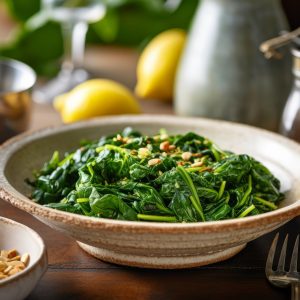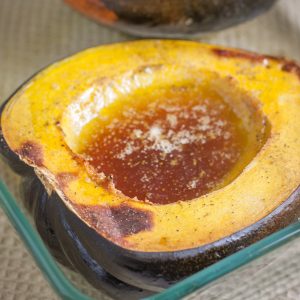Homemade Sauerkraut: A Simple Recipe for Gut-Healthy Fermented Cabbage
Sauerkraut, a tangy fermented cabbage, has been a beloved staple in many cuisines for centuries. Its origins are often traced back to Eastern Europe and Germany, where it has been a traditional side dish and condiment, complementing hearty meals like sausages, pork, and stews. However, sauerkraut is more than just a tasty addition to a meal—it’s also a powerhouse of health benefits, thanks to the fermentation process.
Fermentation transforms cabbage into a probiotic-rich food that promotes gut health by providing beneficial bacteria. It’s also packed with vitamins C and K, fiber, and antioxidants, making it nutritious for those looking to improve digestion and overall wellness. The distinctive sour flavor of sauerkraut comes from natural lactic acid fermentation, which preserves the cabbage and gives it its signature tang.
Making sauerkraut at home is surprisingly easy, requiring only two essential ingredients: cabbage and salt. With a bit of patience, you can create a batch that rivals any store-bought variety, and it can be customized with additional ingredients like caraway seeds, garlic, or even apple for a unique twist. Whether served on a Reuben sandwich, alongside sausages or simply on its own, sauerkraut is a delicious and nutritious food with deep cultural roots.
Homemade Sauerkraut
Equipment
- 1 Large Mixing Bowl
- 1 sharp knife
- 1 Fermentation Crock or large glass jar
- 1 Clean Cloth or fermentation lid
Ingredients
- 1 medium green cabbage about 3 pounds
- 1½ tablespoons sea salt or Kosher salt, non-iodized)
- 1 tablespoon caraway seeds optional
- 2 cloves garlic thinly sliced (optional)
- 1 carrot julienned (optional)
Instructions
Prepare the Cabbage
- Remove any damaged outer leaves from the cabbage.
- Cut the cabbage into quarters and remove the core.
- Thinly slice the cabbage using a sharp knife or mandoline slicer.
Salt the Cabbage
- Place the sliced cabbage in a large mixing bowl.
- Sprinkle the salt evenly over the cabbage.
- Using clean hands, massage and squeeze the cabbage for about 5-10 minutes until it becomes soft and releases its juices. This brining process is essential for fermentation.
Add Optional Ingredients
- If using, mix in caraway seeds, garlic, or julienned carrots to add extra flavor to your sauerkraut.
Pack the Cabbage
- Transfer the salted cabbage and its brine into your fermentation crock or glass jar.
- Press the cabbage down firmly to eliminate air pockets. Ensure the cabbage is submerged under the brine. You can use a fermentation weight or a smaller jar filled with water to submerge the cabbage.
Seal and Ferment
- Cover the jar with a clean cloth secured with a rubber band, or use a fermentation lid to allow gases to escape while keeping contaminants out.
- Place the jar in a cool, dark area (65-75°F) for 1 to 4 weeks. Check daily to ensure the cabbage remains submerged and to release any trapped gases if not using a fermentation lid.
Taste and Store
- Begin tasting the sauerkraut after one week. Once it reaches your desired level of tanginess, remove the weight and seal the jar with a tight lid.
- Store the finished sauerkraut in the refrigerator, where it will continue to develop flavor and can be kept for several months.
Notes
- Use Fresh, Quality Cabbage: Fresh cabbage with high water content ensures a good brine.
- Maintain Cleanliness: Always use clean utensils and hands to prevent unwanted bacteria from affecting the fermentation.
- Monitor Fermentation: Temperature plays a crucial role. Cooler temperatures slow fermentation, while warmer temperatures speed it up.
- Customize Flavors: Feel free to experiment with different spices and vegetables to create unique variations of your sauerkraut.
Examples of How to Use Sauerkraut
Use | Description |
| Reuben Sandwich | Pile sauerkraut on corned beef, Swiss cheese, and rye bread with Russian dressing, then grill. |
| Bratwurst Topping | Spoon warm sauerkraut over grilled bratwurst or other sausages. |
| Sauerkraut Soup (Kapustnica) | Simmer sauerkraut with sausage, mushrooms, potatoes, and paprika for a hearty Eastern European soup. |
| Pierogi Filling | Mix sauerkraut with onions and mushrooms as a tangy filling for pierogi. |
| Side Dish | Serve sauerkraut sautéed with onions and bacon as a classic side for meats. |
| Salad Ingredient | Add raw sauerkraut to salads for crunch, acidity, and probiotics. |
| Sauerkraut Pancakes (Sauerkraut Latkes) | Fold drained sauerkraut into potato pancake batter for a savory twist. |
| Sauerkraut Casserole | Layer sauerkraut with meats, potatoes, and cheese, then bake. |
| Hot Dog Topping | A classic — load sauerkraut onto hot dogs with mustard. |
| Sauerkraut Frittata | Stir sauerkraut into eggs and bake or pan-fry for a savory frittata. |
| Rice Bowl Topping | Spoon sauerkraut on grain bowls for a bright, tangy element. |
| Sauerkraut Smoothie | Add small amounts to green smoothies for a probiotic boost and tangy note. |
| Sauerkraut Bread | Mix sauerkraut into bread dough for a moist, flavorful loaf. |
| Taco Topping | Use sauerkraut on fish or pork tacos in place of slaw. |
| Pizza Topping | Add sauerkraut to pizzas with sausage, mushrooms, or caramelized onions. |
| Stuffed Cabbage (with Sauerkraut) | Simmer cabbage rolls on a bed of sauerkraut for extra flavor. |
| Buddha Bowl Component | Add sauerkraut for probiotics and acidity to bowls with vegetables and grains. |
History of Sauerkraut
Sauerkraut has a long, fascinating history that spans several cultures. Although it’s often associated with German cuisine, its roots trace back to ancient China. Over 2,000 years ago, Chinese laborers built the Great Wall with fermented cabbage in rice wine to preserve it during the cold months. This fermentation method eventually traveled westward along trade routes, making it way to Europe.
In Europe, the fermentation process was adapted, with salt being used instead of rice wine, which resulted in the sauerkraut we know today. By the 16th century, Germanic peoples had embraced sauerkraut as a staple food, particularly in the winter months, when fresh produce was scarce. It became a popular accompaniment to meats like sausages and pork, and its long shelf life made it invaluable for long sea voyages, helping sailors prevent scurvy due to its high vitamin C content.
Sauerkraut’s cultural significance spread beyond Germany, becoming a beloved dish in Eastern European countries like Poland and Russia. Today, sauerkraut remains a symbol of traditional European fare and is appreciated globally for both its flavor and health benefits.
The Evolution of Fermentation and Sauerkraut
Fermentation is one of the oldest methods of food preservation, predating refrigeration by thousands of years. The fermentation process behind sauerkraut is called lacto-fermentation. When mixed with salt, cabbage creates an environment in which beneficial bacteria, known as lactobacillus, can thrive. These bacteria convert the natural sugars in the cabbage into lactic acid, which not only preserves the cabbage but also gives sauerkraut its signature sour flavor.
As this method spread westward, mainly through the Roman Empire, Europeans began to adopt it. They adapted the Chinese process by using salt rather than rice wine to ferment the cabbage, which led to the version we recognize today. By the 1500s, it had become a widespread food across Central and Eastern Europe, valued for its ability to last through harsh winters.
Regional Significance
In Germany, where sauerkraut has become iconic, it is more than just a condiment—it’s a cultural staple. Paired with sausages (like bratwurst), pork, and hearty dishes, it plays a vital role in traditional German meals. The same can be said for Poland, where kapusta kiszona (Polish sauerkraut) is used in dishes like bigos, a hunter’s stew combining cabbage, meats, and spices. In Russia, fermented cabbage (kvashenaya kapusta) is similarly popular, often served as a side dish or in soups.
The long-lasting qualities of sauerkraut made it indispensable in countries where winters were long and growing seasons were short. Dutch sailors and explorers in the 18th century stored barrels of sauerkraut on ships to prevent scurvy, further cementing its practical value in global history.

Modern Uses and Variations
Today, sauerkraut enjoys global recognition, not only in traditional dishes but also as a superfood. The rise of probiotic-rich foods in modern health trends has gained popularity for promoting gut health. It’s now commonly used in health-conscious dishes like grain bowls and salads and even as a topping for avocado toast.
Additionally, modern variations of sauerkraut go beyond the basic cabbage and salt recipe. Home cooks and chefs incorporate other vegetables and spices to create unique flavor profiles. Some add carrots, garlic, or onions, while others experiment with caraway seeds, juniper berries, or chili flakes for a spicy twist. Sweet varieties featuring apples or beets are also becoming more common in culinary explorations.













